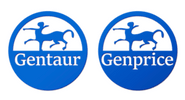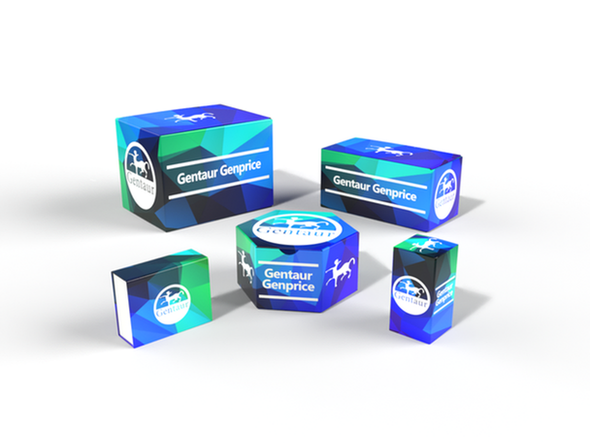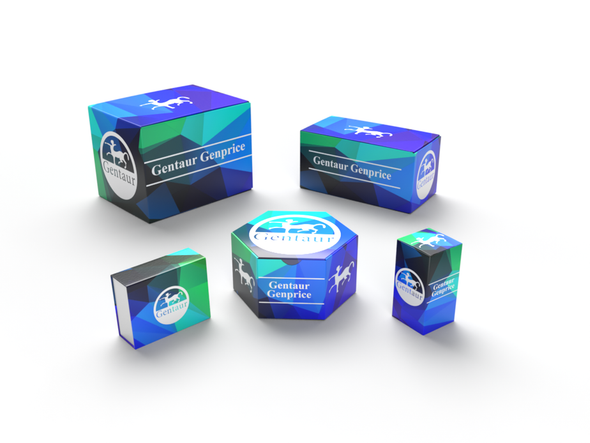Description
IL-33 Antibody [IL33305B] | 36-355 | Gentaur UK, US & Europe Distribution
Host: Mouse
Reactivity: Human
Homology: N/A
Immunogen: Recombinant human IL-33.
Research Area: Chemokines & Cytokines
Tested Application: E, WB, Func, IHC, IP
Application: ELISA: (direct or indirect: 1:2'000-1:5'000) , Functional Application (Blocking) , Immunohistochemistry (paraffin sections (1:50-1:200) ) , Immunoprecipitation Western blot: (1:2'000-1:5'000 using ECL. Suggested blocking and dilution buffer is PBST with 0.05% Tween 20 and 5% skim milk. Suggested incubation time is 1 hour at rooom temperature) . Optimal conditions should be determined individually for each application.
Specificiy: Recognizes human IL-33. Does not cross-react with mouse IL-33.
Positive Control 1: N/A
Positive Control 2: N/A
Positive Control 3: N/A
Positive Control 4: N/A
Positive Control 5: N/A
Positive Control 6: N/A
Molecular Weight: N/A
Validation: N/A
Isoform: N/A
Purification: Protein G-affinity purified.
Clonality: Monoclonal
Clone: IL33305B
Isotype: IgG2aκ
Conjugate: Unconjugated
Physical State: Liquid
Buffer: Liquid. 0.2μm-filtered solution in PBS, pH 7.4. Contains no preservatives.
Concentration: 1 mg/ml
Storage Condition: Stable for at least 1 year after receipt when stored at -20˚C.
Alternate Name: Interleukin-33; IL-1F11; NF-HEV
User Note: Optimal dilutions for each application to be determined by the researcher.
BACKGROUND: Interleukin-33 (IL-33; HF-NEV; IL-1F11) , a member of the IL-1 family of cytokines, is expressed by many cell types following pro-inflammatory stimulation and is thought to be released on cell lysis. The 30kDa human IL33 is converted by CASP1 to a 18kDa protein. IL33 binds to and signals through ST2 (IL1R1) and its stimulation recruits MYD88, IRAK, IRAK4, and TRAF6, followed by phosphorylation of ERK1 (MAPK3) /ERK2 (MAPK1) , p38 (MAPK14) , and JNK. The ability of IL-33 to target numerous immune cell types, like Th2-like cells, mast cells, and B1 cells, and to induce cytokine and chemokine production underlines its potential in influencing the outcome of a wide range of diseases, such as arthritis, asthma, atopic allergy & anaphylaxis, cardiovascular disease/atherosclerosis, nervous system diseases, and sepsis.

![IL-33 Antibody [IL33305B] IL-33 Antibody [IL33305B]](https://cdn11.bigcommerce.com/s-1rdwiq712m/images/stencil/608x608/products/462369/468198/gentaur-genprice__26005.1661610467__29809.1661628092__75433.1661676199__77988.1661684280__64362.1661692443__02085.1662049603__45075.1662119302__91744.1662191540__21580.1662291419__76879.1663495065.png?c=1)
![IL-33 Antibody [IL33305B] IL-33 Antibody [IL33305B]](https://cdn11.bigcommerce.com/s-1rdwiq712m/images/stencil/590x590/products/462190/468019/gentaur-genprice__26005.1661610467__29809.1661628092__75433.1661676199__77988.1661684280__64362.1661692443__02085.1662049603__45075.1662119302__91744.1662191540__21580.1662291419__62645.1663495036.png?c=1)

![IL-33 Antibody [IL33026B] IL-33 Antibody [IL33026B]](https://cdn11.bigcommerce.com/s-1rdwiq712m/images/stencil/590x590/products/462191/468020/gentaur-genprice__26005.1661610467__29809.1661628092__75433.1661676199__77988.1661684280__64362.1661692443__02085.1662049603__45075.1662119302__91744.1662191540__21580.1662291419__35546.1663495036.png?c=1)
![CD32 Antibody [8.7] CD32 Antibody [8.7]](https://cdn11.bigcommerce.com/s-1rdwiq712m/images/stencil/590x590/products/483625/489454/gentaur-genprice__26005.1661610467__29809.1661628092__75433.1661676199__77988.1661684280__64362.1661692443__02085.1662049603__45075.1662119302__91744.1662191540__21580.1662291419__51950.1663498743.png?c=1)




